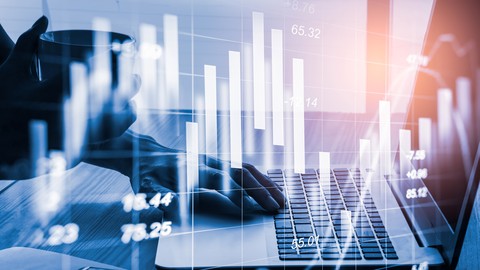In recent years, algorithmic trading has emerged as a dominant force in financial markets, revolutionizing the way trading is conducted. Also known as algo trading or black-box trading, this approach utilizes complex mathematical models and algorithms to execute trades automatically. In this comprehensive guide, we'll delve into the intricacies of algo trading, exploring its mechanisms, benefits, risks, and prospects.
Understanding Algorithmic Trading
Algorithmic trading involves the use of computer algorithms to execute pre-defined trading strategies with speed and precision. These algorithms are designed to analyze market data, identify trading opportunities, and execute trades without human intervention. The key components of algo trading include:
Data Analysis: Algorithms analyze vast amounts of market data, including price movements, volume, and other relevant indicators, to identify patterns and trends.
Strategy Formulation: Traders develop trading strategies based on the insights derived from data analysis. These strategies can range from simple to highly complex, depending on the objectives and preferences of the trader.
Execution: Once a trading signal is generated based on the chosen strategy, algorithms swiftly execute trades across various financial instruments and markets.
Advantages of Algorithmic Trading
Algorithmic trading offers several advantages over traditional manual trading methods:
Speed and Efficiency: Algorithms can execute trades within milliseconds, enabling traders to capitalize on fleeting market opportunities and avoid price slippage.
Accuracy and Consistency: Algo trading eliminates the influence of human emotions and biases, leading to more consistent execution of trading strategies.
Diversification: Algorithms can trade across multiple markets and asset classes simultaneously, allowing for greater diversification and risk management.
Backtesting and Optimization: Traders can backtest their algorithms using historical data to evaluate performance and fine-tune strategies for optimal results.
Risks and Challenges
While algorithmic trading offers numerous benefits, it also comes with its fair share of risks and challenges:
Technical Failures: Algo trading systems are vulnerable to technical glitches, software bugs, and connectivity issues, which can result in significant losses if not properly managed.
Market Volatility: Rapid market fluctuations and unexpected events can lead to sudden and unpredictable losses, especially if algorithms are not equipped to handle volatile conditions.
Regulatory Scrutiny: Regulatory authorities closely monitor algorithmic trading activities to ensure fair and orderly markets, imposing stringent regulations and compliance requirements on market participants.
Overfitting: Traders must be cautious of overfitting their algorithms to past data, as this can lead to poor performance in real-world trading conditions.
Future Trends in Algorithmic Trading
Looking ahead, several trends are shaping the future of algorithmic trading:
Machine Learning and AI: Advances in machine learning and artificial intelligence are enabling traders to develop more sophisticated algorithms capable of adapting to changing market conditions and learning from experience.
High-Frequency Trading (HFT): The rise of high-frequency trading continues to reshape financial markets, with algorithms executing trades at lightning-fast speeds to capitalize on minuscule price discrepancies.
Alternative Data Sources: Traders are increasingly leveraging alternative data sources, such as social media sentiment, satellite imagery, and web scraping, to gain unique insights and alpha-generating opportunities.
Quantamental Investing: The convergence of quantitative and fundamental analysis, known as quantamental investing, is gaining traction among algo traders, combining the strengths of both approaches to enhance investment decision-making.
In conclusion, algorithmic trading has transformed the landscape of financial markets, offering unprecedented speed, efficiency, and automation. While it presents numerous opportunities for traders, it also poses significant risks that must be carefully managed. By staying abreast of technological advancements and market trends, traders can harness the power of algo trading to navigate the complexities of today's dynamic markets successfully.





Comments